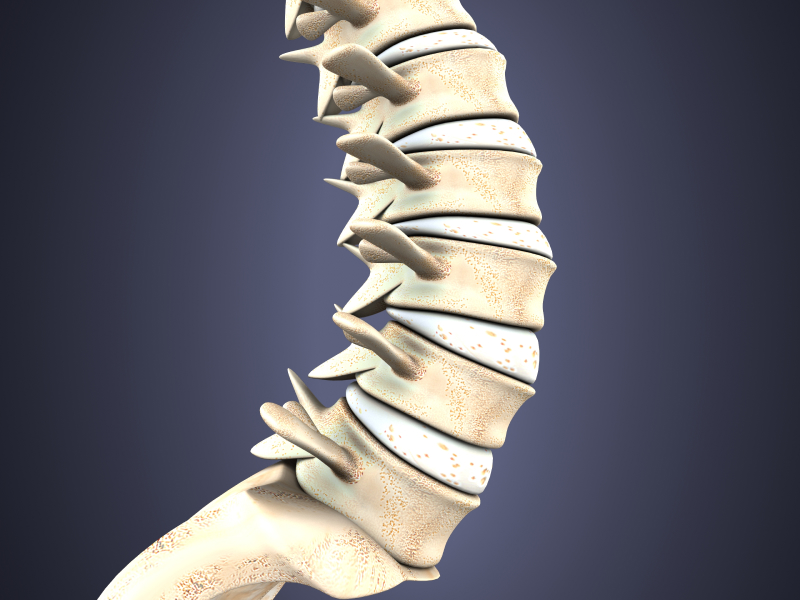
Postural Kyphosis

Postural Kyphosis
Postural Kyphosis
What Is Kyphosis? What Causes Abnormal Kyphosis?
The exaggerated curvature of the thoracic spine when viewed from the side is called kyphosis (gibbosity). Increased kyphosis deformity may be linked to posture only and often corrected with exercise and appropriate posture. In a small percentage of patients with kyphosis, the deformity is less mobile in comparsion to the postural type, and is related to wedging of vertebral bones. This type of kyphosis is Scheuermann's kyphosis and its treatment is varies from postural kyphosis. The reason for this disorder is not known. In adolescents with Scheuermann's kyphosis who have not completed skeletal maturity, bracing may be recommended.

What Is Postural or Positional Kyphosis?
The increase in physiologic kyphosis, which is 35 degrees during physiologic standing to 55 degrees due to poor posture, is "positional kyphosis". It’s the most common reason why families bring their children to us with kyphosis complaints.
What Causes Postural Kyphosis? How Is It Prevented?
The major causes of postural kyphosis are sitting in a poor position and insufficient physical condition. Unfortunately, many of today’s children do not participate in games that promote movement or sports activities. This lifestyle causes children to spend most of their time in a poor sitting posture, and results in a poor physical condition. These bad habits are the most common causes of positional kyphosis.
How Can Postural Kyphosis Be Corrected?
First, you will not gain results by constantly telling children to “stand straight.” They result in significant tension and stubborn behavior. Also, backpacks do not cause this problem.
What causes postural kyphosis are poor sitting habits. So one way to address postural kyphosis is by adjust the height and angle of desks and chairs to a correct position, and adjust the heights of monitors and keyboards to appropriate positions. With these adjustments, we enable our children to get used to ideal positions that keep their backs within the physiologic limits.
Also, persuade and motivate children to participate sports activities more often—at least one hour, three days a week is ideal. Sports will prevent kyphosis by increasing the physical condition and also the power and endurance of the muscles that keep the spine erect.
In conclusion, warning your child to straighten up will not solve the problem; instead it creates anxiety. If you want to be releived from this problem as a family, the best remedy is taking the necessary precautions and persuading your child to regularly participate in sports.
What’s the Difference Between Scheuermann's Kyphosis and Kyphosis Due to Poor Posture?
When you warn individuals with posture dependent kyphosis, they can correct their kyphosis and stand more erect.
On the other hand, patients with Scheuermann's (developmental) kyphosis may not be able to correct their posture.
Scheuermann’s Kyphosis
A growing number of patients complain about the poor posture and kyphotic appearance of their children. Fortunately, only a very small percentage of children I examine have kyphosis requiring treatment. In most children, the abnormal shape noticed by the parents is diagnosed as a postural or positional deformity, which is a slight gibbosity due to poor posture.
What Causes Severe Kyphosis Requiring Treatment?
When we observe the spine from the back, we see that it is a straight column formed by alignment of the vertebras on top of each other, with a projection passing from the midpoint of the head and the pelvic bone. When the human spine is observed from the side, we see not a straight line, but some physiologic curvatures formed by angulation of the vertebras with each other. For example, the chest-upper back has a definite gibbosity, and the adjacent lower back has a hollowness.
The kyphosis (gibbosity) in the chest-upper back shows a wide variation between individuals. Some people have a more erect posture than others. Normal angular measurements performed on a lateral (side) X-ray of the human spine, taken when a person stands comfortably, range between 20 and 55 degrees. Therefore, a kyphosis of 20 degrees or 55 degrees are considered within normal limits. As a result, it is absolutely normal for one family member to be more or less kyphotic than another.
What Is Structural Kyphosis or Scheuermann's Kyphosis?
Structural kyphosis is a type of kyphosis greater than 55 degrees, even when the person is in physiologic standing position, often due to an underlying bone and/or soft tissue pathology. This kyphosis may be due to congenital vertebra anomalies (congenital kyphosis), some bone diseases (skeletal dysplasia, neurofibromatosis, etc.), spine infection (spinal tuberculosis, etc.) or injury of the spine due to vertebral fractures, and various nerve-muscle diseases.
However, in growing patients, the most common reason for structural kyphosis is Scheuermann's disease. In this disease, the vertebrae lose their rectangular shape and attain a wedge shape due to an affection without a known cause, resulting in a kyphosis. When Scheuermann's disease is not treated, it may result in an increase in kyphosis, reaching dangerous levels.
How Are Severe Kyphosis and Postural Kyphosis Distinguished?
One test, easily applied by parents, can distinguish between severe and postural kyphosis. Tell your child to straighten his/her back. If the kyphosis straightens, then he or she probably has postural kyphosis. When the most prominent part does not display an obvious correct or shows only a slight correction, you may need to visit your doctor and receive professional help.
There is no consensus on the threshold magnitude of Scheuermann’s kyphosis, which may necessitate surgical treatment. However, the general consensus is to reserve surgical treatment for patients exhibiting more than 75 degrees of kyphosis. Most common surgical treatment for Scheuermann’s Kyphosis is posterior fusion and instrumentation. However, few surgeons may prefer to operate patients via an anterior approach.